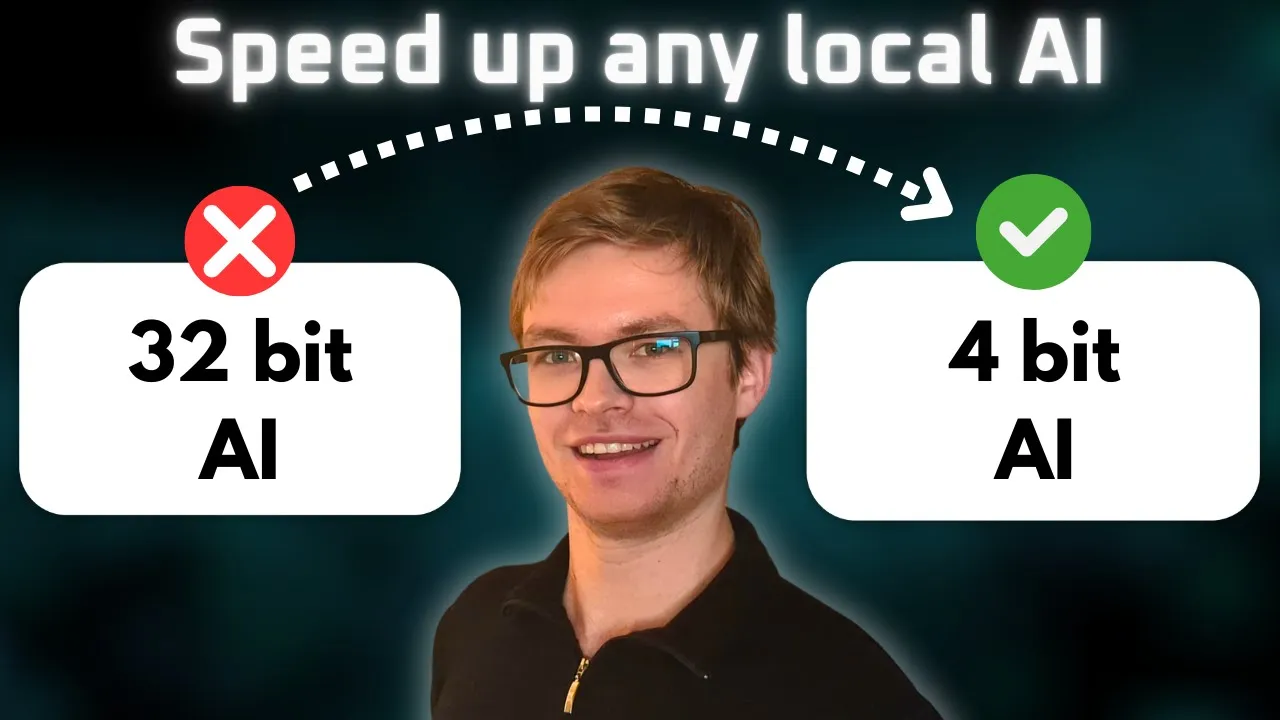Democratizing AI Through Model Optimization
Throughout the history of computing, transformative technologies have often followed a predictable path: initial development requires specialized, expensive hardware, but over time, optimization techniques make these capabilities accessible to mainstream users. Artificial intelligence is now experiencing this democratization, with model optimization—particularly quantization—leading the charge.
For engineers looking to capitalize on this accessibility shift, my comprehensive AI engineer career path outlines how to build skills that leverage both optimized local models and traditional cloud-based approaches.
Breaking Down Historical Barriers to AI Adoption
Until recently, running advanced AI models presented formidable barriers. A state-of-the-art language model with billions of parameters required:
- High-end GPUs with substantial memory (often 24GB+)
- Significant power consumption
- Specialized cooling solutions
- Technical expertise in model deployment
These requirements effectively limited serious AI capabilities to well-resourced tech companies, research institutions, and cloud providers. The average developer, educator, small business, or hobbyist was largely excluded from participation in this technological revolution.
This limitation created an AI divide, where the transformative potential of these technologies remained inaccessible to most potential users. The practical consequences were significant: innovative applications went unexplored, educational opportunities were limited, and AI benefits remained concentrated among already-advantaged organizations.
How Optimization Reshapes Who Can Use Advanced AI
Model optimization techniques—with quantization at the forefront—are fundamentally changing this landscape. By reducing models to a fraction of their original size while preserving most of their capabilities, these approaches dramatically expand the pool of potential AI users.
The transformation is remarkable:
- Models that required specialized data center hardware can now run on gaming laptops
- Applications that needed constant cloud connectivity can function locally
- Organizations that couldn’t afford dedicated AI infrastructure can leverage existing hardware
- Individuals without access to expensive GPUs can experiment with cutting-edge models
This isn’t merely a matter of convenience—it represents a foundational shift in who can participate in the AI revolution. When a 7B parameter model shrinks from 30GB to 4GB through quantization, it crosses a critical threshold from “impossible on consumer hardware” to “readily accessible.” For practical guidance on implementing these optimized models locally, explore my detailed guide on running AI models locally without expensive hardware which covers setup, optimization, and deployment strategies.
New Possibilities Enabled by Local AI Execution
The ability to run sophisticated AI models locally unlocks numerous applications that were previously impractical:
Enhanced Privacy: Sensitive data can be processed without leaving the device, enabling AI applications in healthcare, personal finance, and confidential business contexts.
Offline Capability: AI assistants, translation services, content generation tools, and analytical applications can function without internet connectivity—critical for remote areas or situations with limited connectivity.
Reduced Latency: Local execution eliminates network delays, enabling real-time applications like gaming AI, interactive education, and responsive creative tools.
Resource Autonomy: Individuals and organizations gain independence from cloud providers, avoiding ongoing subscription costs and service limitations.
These new possibilities expand not just who can use AI but what AI can be used for, opening entirely new application categories.
Practical Applications Now Within Reach
The democratization of AI through optimization enables numerous previously impractical applications:
- Small businesses can implement sophisticated customer service chatbots without expensive cloud API subscriptions
- Independent creators can access AI-powered tools for content generation, editing, and enhancement
- Educators can bring advanced AI demonstrations directly into classrooms without specialized hardware
- Healthcare providers in resource-constrained environments can utilize diagnostic AI tools
- Non-technical users can experiment with AI capabilities through simplified local installations
Each of these applications represents not just a technical achievement but an expansion of opportunity—allowing more diverse participants to benefit from and contribute to AI advancement.
Future Potential as Optimization Techniques Evolve
The optimization techniques we’re seeing today represent just the beginning of this democratization trend. Future developments promise to further expand accessibility:
- More sophisticated quantization approaches that further reduce the accuracy gap
- Hardware specifically designed to efficiently run quantized models
- Hybrid approaches that intelligently balance local and cloud processing
- Models architected from the ground up for efficiency rather than retrofitted
These developments will continue to push the boundaries of what’s possible on consumer hardware, making increasingly powerful AI capabilities available to an ever-wider audience. Understanding how to evaluate and choose between these evolving approaches is crucial for practitioners. Our guide on AI model selection and finding the right tool provides frameworks for assessing performance trade-offs and selecting optimal solutions for specific use cases.
The Broader Impact on Society and Innovation
When technological capabilities become widely accessible, innovation accelerates. We’ve seen this pattern repeatedly—from personal computing to internet access to mobile technology. As AI becomes truly accessible through optimization techniques like quantization, we can anticipate:
- More diverse applications addressing a wider range of human needs
- Innovation from previously excluded communities and regions
- Educational opportunities that prepare a broader population for an AI-influenced future
- More equitable distribution of AI’s economic and social benefits
The democratization of AI through model optimization isn’t just a technical achievement—it’s a transformation in who gets to participate in one of the most significant technological revolutions of our time.
To see exactly how to implement these concepts in practice, watch the full video tutorial on YouTube. I walk through each step in detail and show you the technical aspects not covered in this post. If you’re interested in learning more about AI engineering, join the AI Engineering community where we share insights, resources, and support for your journey. Turn AI from a threat into your biggest career advantage!

